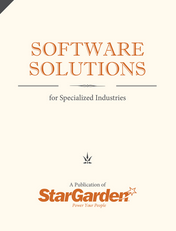Unhappy employees? 3 wrong ways to handle conflict (and 1 right way)
Does your workplace have healthy communication? Particularly when it comes to disagreements? Every workplace is going to experience conflict – whether about what kind of birthday cake to get the HR manager (always go half chocolate/half vanilla!), what kind of new desk chairs to purchase, or how to accommodate budget shortfalls.
New research [1] shows that how people communicate those disagreements is key to whether the conflict is destructive or useful – and that there are a lot of different wrong ways to express disagreement!
Three ways that don't work...
Low directness/high intensity
 Does your office have a lot of nasty, aggressive “cliques”? Many times, in offices with this conflict pattern, team members won’t directly voice their opposition to an idea. Instead, they’ll gang up and engage in behavior clearly designed to block implementation or advancement of the idea, including personal attacks on the proponent (to her face or behind her back). Despite the fact that the response isn’t direct, the message of opposition is crystal clear – served with a side dish of personal disrespect.
Does your office have a lot of nasty, aggressive “cliques”? Many times, in offices with this conflict pattern, team members won’t directly voice their opposition to an idea. Instead, they’ll gang up and engage in behavior clearly designed to block implementation or advancement of the idea, including personal attacks on the proponent (to her face or behind her back). Despite the fact that the response isn’t direct, the message of opposition is crystal clear – served with a side dish of personal disrespect.
This kind of workplace behavior results in high employee turnover and sub-optimal productivity. It can also set up grounds for a workplace harassment or discrimination suit, depending on the parties involved and their specific actions. Management and HR should make every effort to disperse the leading actors and discourage this type of conflict response, both to boost productivity and mitigate risk.
Low directness/low intensity
Although not as cruel as low directness/high intensity behavior, low intensity behavior that doesn’t directly address opposition to problems can be equally problematic. This frequently occurs when workers feel unable to voice opposition directly, for fear they will suffer negative consequences (to their employment situation or in the nature of the response itself). As a result, instead of registering their objections, they descend into passive-aggressive behavior: “forgetting” to fulfill their obligations (frequently also embarrassing someone who they oppose or protesting a situation they dislike), purposely missing deadlines, withholding important information, etc.
Although this type of behavior is unlikely to lead to harassment issues, it is both inefficient and can lead to malpractice or malfeasance issues, when employees’ omissions and failings amount to failure to perform your company’s obligations to your contractual or legal requirements. It also usually results in a disgruntled, generally unhappy workforce. If you have numerous team members who seem to be exhibiting this kind of conflict response behavior, HR and management should work to encourage more direct communication and foster a “safe space” for disagreement.
High directness/high intensity
This is the yelling, stapler-throwing boss, or the staff meetings that descend into shouting matches. Most offices understand that this behavior is counterproductive, but it usually continues unchecked in team  members who are perceived as “too valuable” to rein in.
members who are perceived as “too valuable” to rein in.
As in the situation of low directness/high intensity, these workplaces frequently have high turnover, and can be breeding grounds for lawsuits (or in the case of thrown objects, criminal charges). It is essential that HR and management implement a zero-tolerance policy on this kind of behavior for the sake of productivity and risk management.
...And one that does
High directness/low intensity
Wondering if any kind of conflict can be productive and successful? The high directness/low intensity kind fits the bill. If your office’s communication is unambiguous – you know that there are conflicting positions – but you address them with low-intensity actions like respectful debate and deliberation, congratulations!
Unlike the “high intensity” communication, “low intensity” communication focuses on the problems and potential solutions rather than personally attacking the team members or their positions. Good communication depends on people listening to and considering other people’s views when working together toward a positive outcome. It’s easier to look at a variety of outcomes and considerations, and contemplate solutions that help everyone, when each person doesn’t feel attacked. And happy employees are more productive employees!
Communication that emphasizes “directness” – addressing the conflict or problem immediately at hand – ensures that the team makes decisions, improvements, and progress. Successful direct, low-intensity communication enables a workplace to speak openly about conflicts, problems, and potential solutions in a non-threatening, objective way. Only with this kind of informed change can your business use its human resources to their full potential and thrive as an organization.
Our streamlined, integrated payroll and scheduling systems take the pain out of payroll and scheduling, so you can focus on other areas - like effective staffing and communication skills! StarGarden has custom-built software solutions for specialized industries with diverse payroll, including human resources software for education, payroll systems and cloud-based payroll management for heavy industry, HR software for cross-border workforces, and more!
Want to learn more about the benefits of an integrated HR & payroll system? Download our FREE eBook by clicking the image below, or contact us today!

